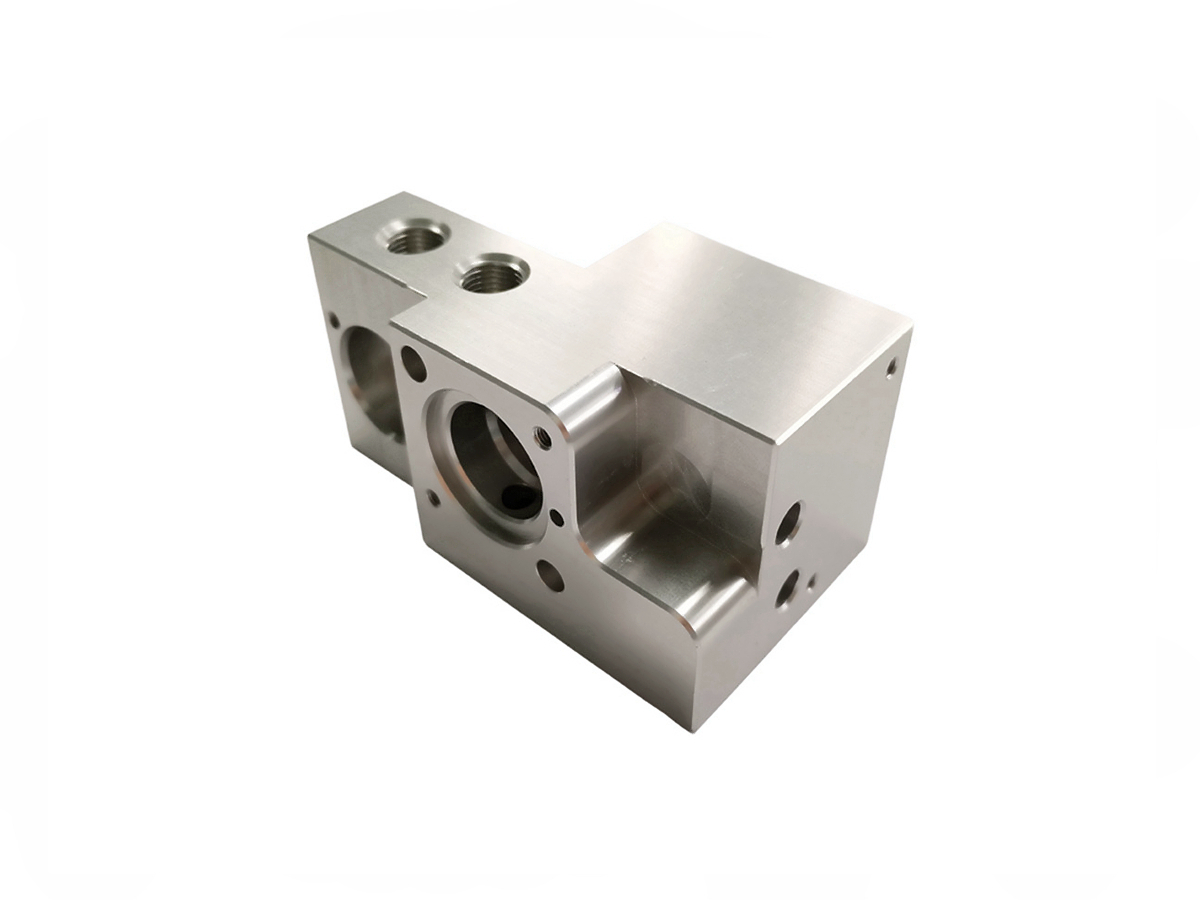Custom CNC Machining for Durable Agricultural Equipment Parts
Introduction to CNC Machined Agricultural Parts
Agricultural equipment operates under demanding conditions characterized by heavy loads, exposure to abrasive materials, harsh weather, and continuous mechanical stress. Custom CNC machining plays a crucial role in manufacturing high-quality, durable agricultural parts such as gearboxes, axles, hydraulic components, tillage equipment parts, brackets, and fasteners. Materials typically selected for these parts include alloy steels (4140, 4340), stainless steels (SUS304, SUS316), aluminum alloys (6061-T6, 7075-T6), and robust bronze alloys (C86300), chosen specifically for strength, toughness, corrosion resistance, and extended operational life.
With professional CNC machining services, manufacturers achieve precision-engineered parts with exceptional performance, reliability, and longevity in agricultural applications.
Material Performance Comparison for Agricultural Equipment Parts
Material | Tensile Strength (MPa) | Yield Strength (MPa) | Hardness | Corrosion Resistance (ASTM B117) | Typical Applications | Advantages |
|---|---|---|---|---|---|---|
655-1000 | 415-655 | HRC 28-32 | Moderate (>500 hrs) | Axles, drive shafts | Excellent toughness, high strength | |
515-620 | 215-290 | HRB 80-92 | Excellent (>1000 hrs) | Hydraulic components, fittings | Superior corrosion resistance | |
310-345 | 276 | HB 95 | Excellent (>1000 hrs) | Brackets, structural components | Lightweight, corrosion-resistant | |
760-895 | 380-480 | HB 210-270 | Good (>700 hrs) | Bearings, heavy-load bushings | Excellent wear resistance, high load-bearing |
Material Selection Strategy for CNC Machined Agricultural Parts
Effective material selection is critical to meet the durability and strength requirements of agricultural equipment:
Alloy Steel 4140 is ideal for parts subjected to dynamic stresses and shock loading, such as axles and shafts, due to its high tensile strength (up to 1000 MPa) and superior toughness.
Stainless Steel SUS304 provides outstanding corrosion resistance (over 1000 hrs ASTM B117), suitable for hydraulic fittings and components frequently exposed to harsh agricultural chemicals and moisture.
Aluminum 6061-T6 is selected for its excellent strength-to-weight ratio and corrosion resistance, perfect for structural brackets and machinery frames needing lighter weight without compromising structural integrity.
Bronze C86300 excels in heavy-load, high-wear environments, making it suitable for bearings and bushings where strength, wear resistance, and reliability are critical.
CNC Machining Processes for Durable Agricultural Components
CNC Machining Process | Dimensional Accuracy (mm) | Surface Roughness (Ra μm) | Typical Applications | Key Advantages |
|---|---|---|---|---|
±0.01-0.02 | 0.8-1.6 | Gearboxes, structural parts | Versatile precision | |
±0.005-0.01 | 0.4-1.2 | Axles, hydraulic rods | High rotational accuracy | |
±0.002-0.005 | 0.1-0.4 | Precision bearings, shafts | Superior surface finishes | |
±0.01-0.02 | 0.8-3.2 | Fittings, brackets | Accurate hole placement |
CNC Process Selection Strategy for Agricultural Equipment Parts
Selecting the appropriate CNC machining processes ensures part reliability and performance:
CNC Milling effectively creates complex, precise shapes required for gearboxes and structural components with dimensional tolerances (±0.01-0.02 mm).
CNC Turning provides superior rotational accuracy (±0.005 mm) for shafts, axles, and hydraulic components, ensuring smooth operation and high performance.
CNC Grinding achieves extremely tight tolerances (±0.002-0.005 mm) and fine surface finishes, essential for precision parts like bearings and shaft journals to reduce friction and extend operational life.
CNC Drilling delivers precise hole placement (±0.01-0.02 mm), critical for accurately assembling fittings, brackets, and equipment frames.
Surface Treatment Performance Comparison for Agricultural Equipment Parts
Treatment Method | Surface Roughness (Ra μm) | Wear Resistance (ASTM G99) | Corrosion Resistance (ASTM B117) | Surface Hardness | Typical Applications | Key Features |
|---|---|---|---|---|---|---|
0.4-1.2 | Excellent (<0.1 mm³/Nm) | Moderate (>500 hrs) | HRC 55-62 | Axles, drive shafts | Increased strength, fatigue resistance | |
0.8-2.0 | Moderate (0.2-0.4 mm³/Nm) | Excellent (>1200 hrs) | Moderate (HV ~200-350) | Structural parts, external components | Robust corrosion protection | |
0.4-1.0 | Good (0.1-0.2 mm³/Nm) | Excellent (>1000 hrs) | HV 400-600 | Aluminum parts, brackets | Enhanced corrosion and abrasion resistance | |
0.6-1.5 | Moderate (0.2-0.4 mm³/Nm) | Good (>300 hrs) | Moderate (~HV 200-300) | Fasteners, pins | Corrosion resistance, anti-galling |
Surface Treatment Selection for CNC Machined Agricultural Components
Proper surface treatments significantly enhance the durability of agricultural equipment parts:
Heat Treatment enhances component strength (HRC 55-62) and fatigue life, ideal for heavily stressed drive shafts and axles.
Galvanizing provides outstanding corrosion protection (>1200 hrs ASTM B117), suitable for structural and externally exposed equipment components.
Anodizing delivers excellent corrosion and wear resistance (HV 400-600, ≥1000 hrs ASTM B117), ideal for aluminum brackets and parts.
Black Oxide offers moderate corrosion protection and anti-galling properties, which are beneficial for fasteners, pins, and internal equipment assemblies.
Typical Prototyping Methods for Agricultural Equipment Parts
CNC Machining Prototyping: High-precision prototypes (±0.005 mm accuracy) for validating mechanical functionality.
Rapid Molding Prototyping: Efficient production of functional prototypes for realistic performance evaluation.
Metal 3D Printing (Powder Bed Fusion): Quick prototyping of metal components (±0.05 mm accuracy), enabling rapid design iterations and evaluations.
Quality Assurance Procedures
Coordinate Measuring Machine (CMM) Inspection (ISO 10360-2): verifies precise dimensional tolerances within ±0.005 mm.
Surface Roughness Measurement (ISO 4287): ensures optimal surface finishes (Ra ≤1.6 µm).
Mechanical and Fatigue Testing (ASTM E8/E466): guarantees robustness under operational stresses.
Non-Destructive Testing (ASTM E1444, ASTM E2375): ensures component integrity without defects.
ISO 9001 Certified Documentation: guarantees traceability, quality consistency, and compliance.
Related FAQs:
What materials are best for durable agricultural components?
How does CNC machining enhance agricultural equipment longevity?
Which surface treatments are optimal for farming machinery?
Why prototype agricultural equipment components?
What quality measures ensure reliability of CNC agricultural parts?

